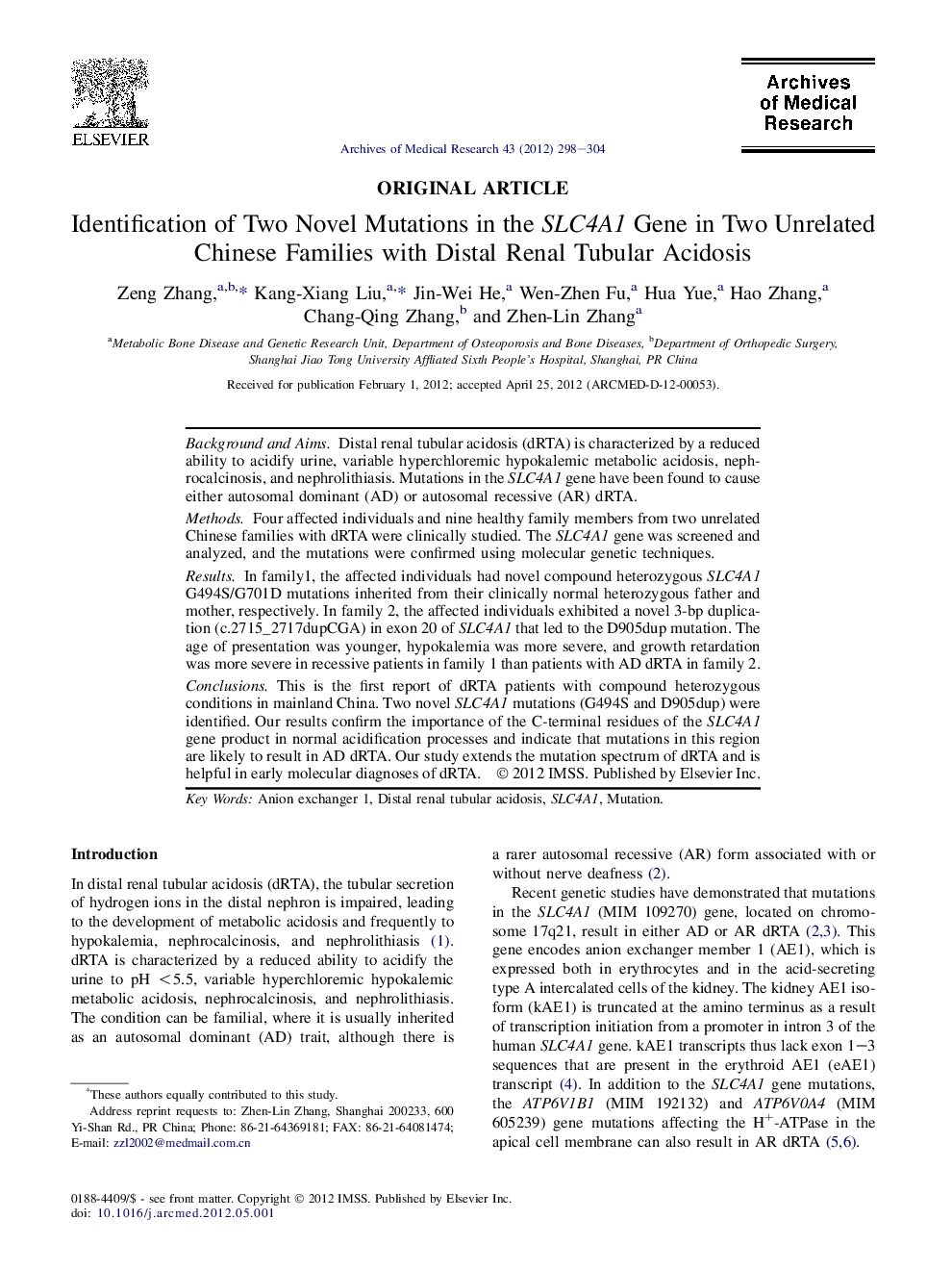| Article ID | Journal | Published Year | Pages | File Type |
|---|---|---|---|---|
| 3446824 | Archives of Medical Research | 2012 | 7 Pages |
Background and AimsDistal renal tubular acidosis (dRTA) is characterized by a reduced ability to acidify urine, variable hyperchloremic hypokalemic metabolic acidosis, nephrocalcinosis, and nephrolithiasis. Mutations in the SLC4A1 gene have been found to cause either autosomal dominant (AD) or autosomal recessive (AR) dRTA.MethodsFour affected individuals and nine healthy family members from two unrelated Chinese families with dRTA were clinically studied. The SLC4A1 gene was screened and analyzed, and the mutations were confirmed using molecular genetic techniques.ResultsIn family1, the affected individuals had novel compound heterozygous SLC4A1 G494S/G701D mutations inherited from their clinically normal heterozygous father and mother, respectively. In family 2, the affected individuals exhibited a novel 3-bp duplication (c.2715_2717dupCGA) in exon 20 of SLC4A1 that led to the D905dup mutation. The age of presentation was younger, hypokalemia was more severe, and growth retardation was more severe in recessive patients in family 1 than patients with AD dRTA in family 2.ConclusionsThis is the first report of dRTA patients with compound heterozygous conditions in mainland China. Two novel SLC4A1 mutations (G494S and D905dup) were identified. Our results confirm the importance of the C-terminal residues of the SLC4A1 gene product in normal acidification processes and indicate that mutations in this region are likely to result in AD dRTA. Our study extends the mutation spectrum of dRTA and is helpful in early molecular diagnoses of dRTA.
